The Restoration and Management of the Leaning Tower of Pisa
Chumki Bhaban is a 9 year old child from Bangladesh. As a special project she had to draw how to restore the Leaning Tower of Pisa. She drew the iconic freestanding bell tower of the cathedral of the Italian city of Pisa, known worldwide for its unintended tilt to one side, with a tunnel on its side. Little men walk through the tunnel to remove soil from underneath the raised end. This was the “Winning Idea.” Yes, this was, more or less, how the tower was straightened by 45 centimeters (18 nches), returning to its 1838 position. The only difference, instead of men, they used giant syringes.
This is what Professor Giovanni Padroni (University of Pisa) explained to a crowd of art aficionados at the Italian Cultural Institute during an interesting event by the title “Restoration and management of the Leaning Tower and Monuments in Piazza dei Miracoli.” The event, hosted by Ornella Flore, included comments by Warrie Price, Director, Battery Park, NY and Paul Marshall Bray, Associate Counsel, Commissioner's Policy Office at the NYS Department of Environmental Conservation.
“The Leaning Tower (there is not even a need to say “of Pisa” because we all know what we are talking about) is just like our Statue of Liberty,” Warrie Price said in her introduction to Professor Padroni's lecture, “it is an iconic figure, a symbol of a city known all over the world.”
A brief history of the tower (Wikipedia):
Construction of the tower occurred in three stages across 344 years. Work on the ground floor of the white marble campanile began on August 14, 1173, during a period of military success and prosperity. This ground floor is a blind arcade articulated by engaged columns with classical Corinthian capitals.
The tower began to sink after construction had progressed to the second floor in 1178. This was due to a mere three-meter foundation, set in weak, unstable subsoil, a design that was flawed from the beginning. Construction was subsequently halted for almost a century, because the Republic of Pisa was almost continually engaged in battles with Genoa, Lucca and Florence. This allowed time for the underlying soil to settle. Otherwise, the tower would almost certainly have toppled. In 1198 clocks were temporarily installed on the third floor of the unfinished construction.
In 1272 construction resumed under Giovanni di Simone, architect of the Camposanto. In an effort to compensate for the tilt, the engineers built upper floors with one side taller than the other. Because of this, the tower is actually curved. Construction was halted again in 1284, when the Pisans were defeated by the Genoans in the Battle of Meloria.
The seventh floor was completed in 1319. It was built by Tommaso di Andrea Pisano, who succeeded in harmonizing the Gothic elements of the bell-chamber with the Romanesque style of the tower. There are seven bells, one for each note of the musical major scale. The largest one was installed in 1655. The bell-chamber was finally added in 1372. The total amount of years that the building of the tower took was between 185 and 195 years.
In 1987 the tower was declared as part of the Piazza del Duomo, UNESCO World Heritage Site along with the neighboring cathedral, baptistery and cemetery. On January 7, 1990, after over two decades of stabilization studies, and spurred by the abrupt collapse of the Civic Tower of Pavia in 1989, the tower was closed to the public.
“1990 is when the phase of structural strengthening started” Professor Padroni explained, “without ever touching the tower itself. The bells were removed to relieve some weight, and cables were cinched around the third level and anchored several hundred meters away. The final solution to prevent the collapse of the tower was to slightly straighten the tower to a safer angle, by removing 38 cubic meters (50 cubic yards) of soil from underneath the raised end. The final cost of this operation was of 25 millions.”
The Tower also underwent a restoration of its “skin,” as the Professor called its surface in order to repair visual damage, mostly corrosion and blackening, and loss of cohesion. “These are particularly pronounced due to the tower's age, its exposure to pollution, marine aerosol (the sea is only 8 miles away) the rain, and the summer heat.”
Cleaning was mostly performed by restorers who also were climbers, as they had to literally hang from the scaffolding in order to work. They had to work at an angle all day and sometimes at night too. They even invented a new kind of scaffolding to get it done (it looked like a ring wrapped around the tower). They used atomized water, light solvents, mechanical precision tools and, for the surfaces suffering from severe loss of cohesion, they needed lasers.
Professor Padroni also briefly discussed the frescoes of the Camposanto Monumentale and exceptional examples of underpaintings (or sinopie) hosted in the Museum of Sinopie.
The event ended with Paul Marshall Bray's talk about the “parks twinnings” (gemellaggio) and conservation exchanges between Unesco regional Park San Rossore Migliarino Massaciuccoli (close to the Leaning Tower) and the Central Pine Barren Park, in Long Island Peninsula.






























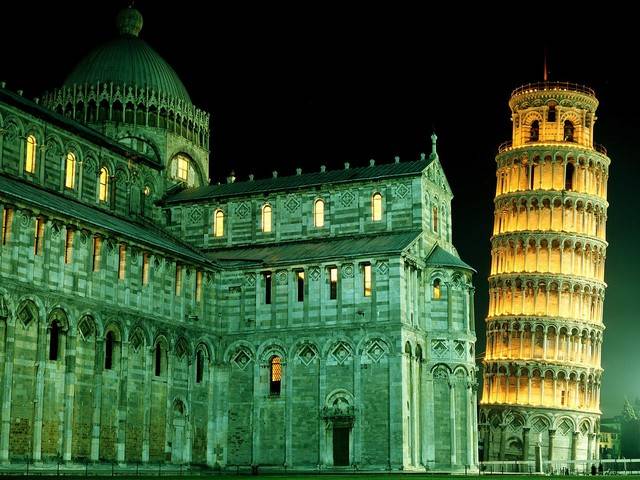
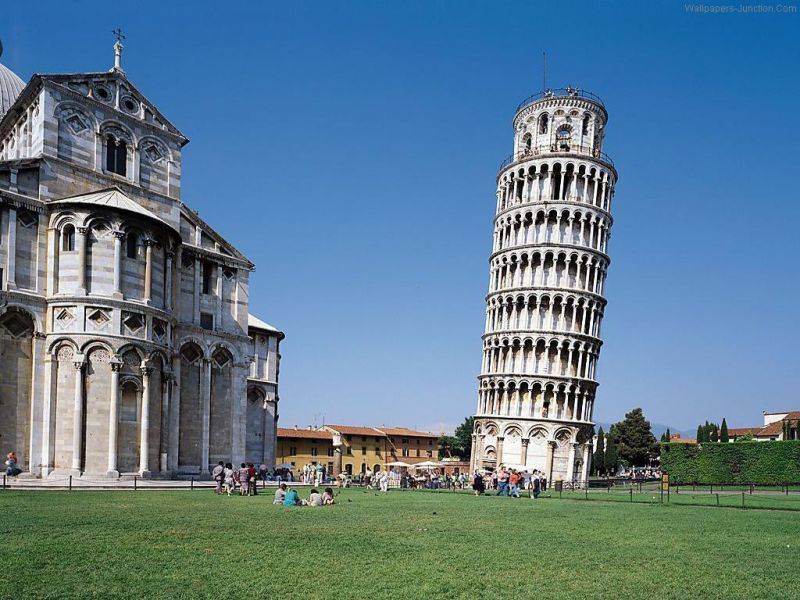
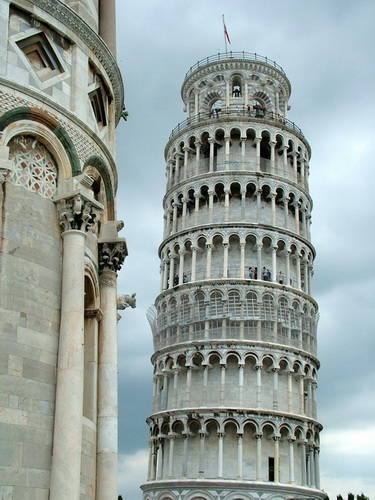
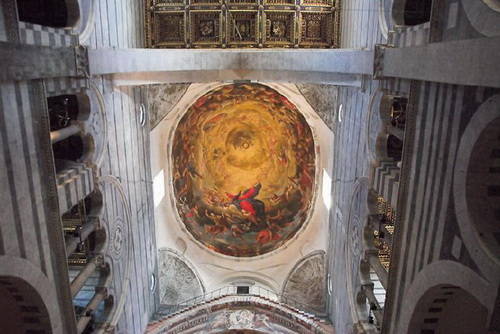
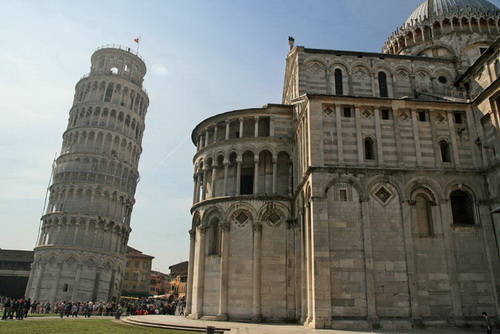
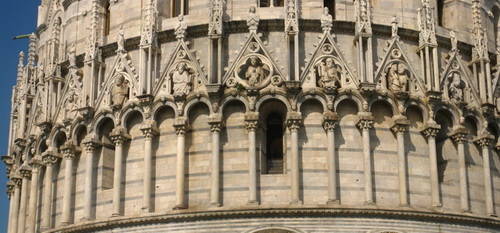



i-Italy
Facebook
Google+
This work may not be reproduced, in whole or in part, without prior written permission.
Questo lavoro non può essere riprodotto, in tutto o in parte, senza permesso scritto.